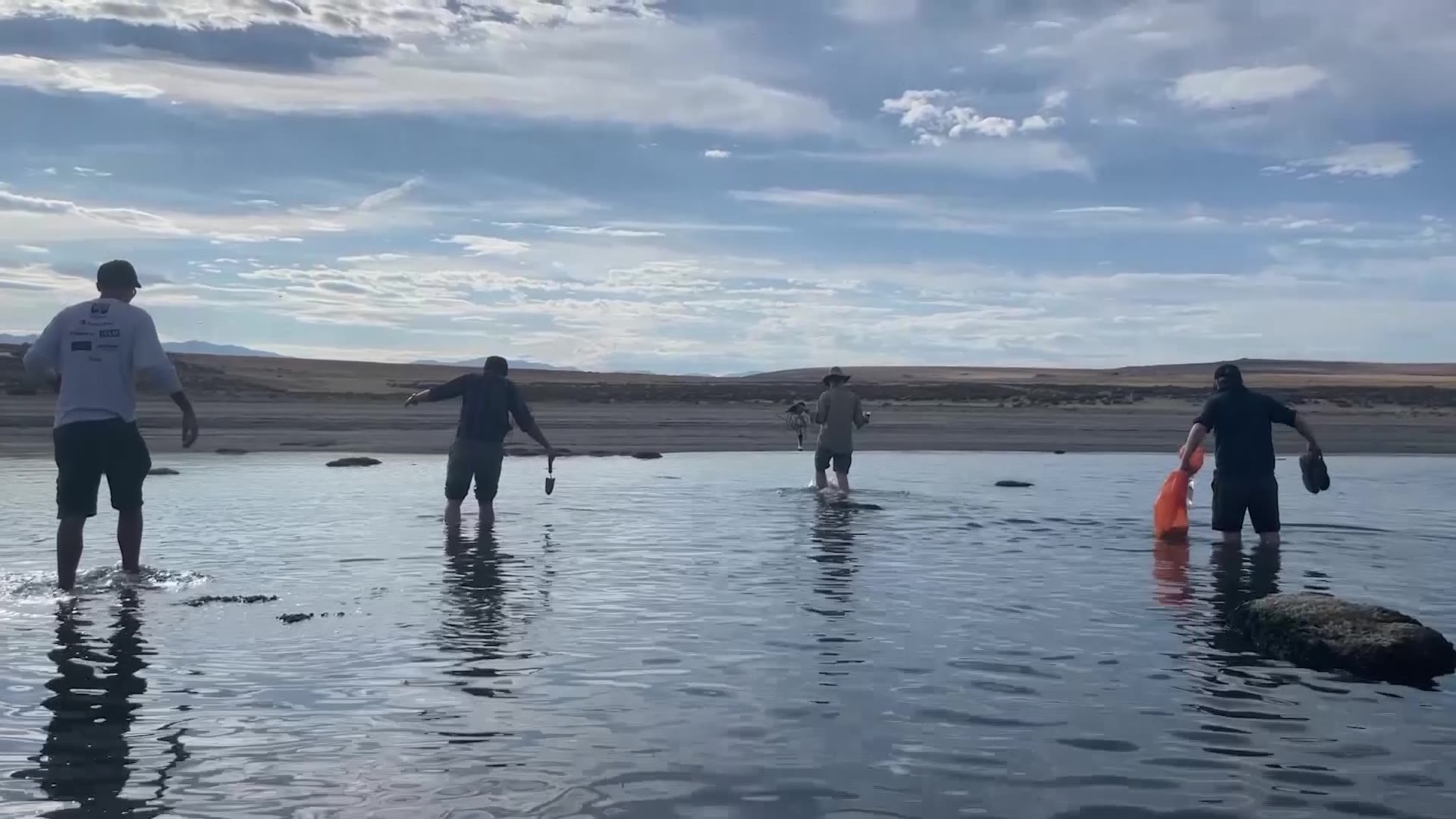Great Salt Lake preservation key for global food security
Dec 8, 2023, 6:35 PM | Updated: 6:51 pm
SALT LAKE CITY — If you buy fish or shrimp at the store, there’s a good chance that seafood was raised with food produced in the Great Salt Lake.
“The Great Salt Lake accounts for, depending on the year, almost 40 to 45% of global supply,” said Tim Hawkes, general counsel and vice chair for the Great Salt Lake Brine Shrimp Cooperative. “So almost half of (the) global supply of artemia cists or eggs comes off of Great Salt Lake.”
Those artemia are essentially brine shrimp eggs that have proven to be the most valuable fish food for aquaculture globally for nearly 75 years.
“Those cysts are almost indestructible,” Hawkes said. “So you can freeze them, you can boil them, you can send them into outer space, and still, under the right conditions, they are going to hatch out.”
Meaning they can be shipped worldwide. Hawkes said 17 to 18 companies are harvesting artemia on the Great Salt Lake, but they support an estimated 10 million metric tons of seafood production worldwide.
“If we lost the Great Salt Lake, or if we lost the ability to produce brine shrimp from the Great Salt Lake, it would have significant impact on our ability to feed the world,” Hawkes said.
As the lake has shrunk, its salination levels have changed, according to Bonnie Baxter, director of the Great Salt Lake Institute and biology professor at Westminster University.
Because the Lake is shallow and wide, it has a higher evaporation rate than most lakes. When the water evaporates, it leaves the salt behind.
Baxter said that as the lake gets saltier, organisms like brine shrimp need more energy to survive. That means energy sacrifices elsewhere, like reproducing and making artemia.
“We concentrate the salts and that has a really negative impact on the biology,” Baxter said.
Baxter said research showed the trajectory of the lake was heading towards drying up in about five years before the high water year of 2023. The runoff bought some time, but the lake is still in danger.
“Maybe it’s not five years now, but it’s certainly less than 10,” Baxter said.
Recent years of higher salt content have impacted Utah’s Brine Shrimp industry. In the last few years, the artemia had not been as high quality or plentiful as harvesters were used to seeing.
“Our industry is really tied to a healthy lake,” Hawkes said. “We’ll lose the ecosystem long before we lose the lake, but it’s a much shorter time horizon before you lose the brine shrimp population.”
Hawkes has presented to the United Nations about artemia production and has talked to aquaculture farms around the world who are interested in the Great Salt Lake’s health. With global populations rising, the Great Salt Lake has an important role in keeping people fed.
Hawkes said he’s happy to see the state take the issue seriously and the collaborative work that has been done in Utah to try and preserve the lake, but it’s going to take a commitment from everybody to keep it alive.
“The reality is we all need to do our part,” Hawkes said.
















